We hope that each of you, our readers, will enjoy and appreciate this article we present about these 5 Marvelous Mammals of California. It was certainly our pleasure to compile the information for you. May it provide you with both education and increased awareness.
These few species listed herein represent only a portion of the natural wonders found throughout the region, though. Yet, it’s our belief that they serve as excellent representations of the wonders found here. Check out some of our other articles for similar marvels.
California Sea Lion
California Sea Lion Facts
- Starting off this article about these 5 Marvelous Mammals of California we present you with the incredible California Sea Lion.
- Surprisingly, the remarkable large mammal remains one of only six known surviving types of sea lion. Quite sadly, one other species, the Japanese Sea Lion, became extinct in the 1950’s. In the meantime, three others now rank as Endangered.
- The incredible creature also has another title by which it’s known, though. That’s the technical term many scientists use for it. That’s a difficult one for the layperson to pronounce, however. This holds true since that term’s Zalophus californianus.
- The animal received that formal label due to the efforts of René-Primevère Lesson. The respected French naturalist accomplished the first official recognition of it as a separate and distinct species. He managed that scientifically noteworthy feat in 1828.
- This wonder of Nature also represents the species with the largest known current population, out of them all. In fact, estimates place its total numbers at around 350,000 individuals. Only the South American Sea Lion currently approaches it in numbers.
- Due to its current population size, along with other factors, the IUCN presently lists the California Sea Lion as Least Concern. Perhaps the leading contributor to its survival success is the fact of its protection under the Marine Mammal Protection Act.
- Like related species, however, this true marvel of Nature still faces dangers from various threats. These principally include climate change and habitat loss. In recent years, though, trash and chemical pollutants of the food chain have begun to threaten it.
California Sea Lion Physical Description
Perhaps most notably, the gorgeous animal known as the California Sea Lion ranks as one of the smallest of the six surviving species. In addition to this statistic, the animal, like many other similar creatures, exhibits a marked degree of sexual dimorphism.
As a result, males average significantly larger than females. Males attain an average length of about 7.9 ft (2.4 m) and a weight of roughly 770 lb (350 kg). Females average 5.9 ft (1.8 m) in length and only 220 lb (100 kg) in weight. Exceptional individuals do exist, however.
Not only that, but coloring patterns vary between the genders as well. That’s because, like juveniles of both sexes, females typically display a tawny brown coloring. But adult males usually display a darker brown or nearly black color.
While both genders display long narrow muzzles, in contrast, other features of the head and face differ. The males of the California Sea Lion also distinguish themselves by developing a protruding crest with a patch of white hair, and also small manes.
- Kingdom: Animali
- Phylum: Chordata
- Class: Mammalia
- Order: Carnivora
- Family: Otariidae
- Genus: Zalophus
- Species: Z. californianus
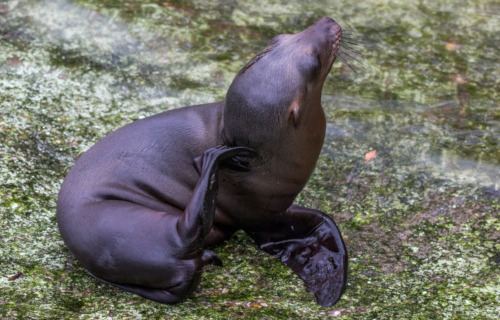
California Sea Lion Distribution, Habitat, and Ecology
The name of the California Sea Lion remains somewhat deceptive, as its native range extends well beyond the shores of California, in the United States. In actuality, that range extends along the entire west coast of North America. It runs from Alaska to Central Mexico.
The magnificent creation of evolution also inhabits numerous islands in that range, in addition to various locations on the continental shores. Notably among these locations are the Channel Islands, Isla Santa Margarita, and Punta Eugenia.
Like related species, the California Sea Lion evolved to have a carnivorous diet. As a result, the species consumes a relatively wide variety of seafood prey. However, these primarily include small squid, various fish, and occasionally even clams.
Given its size, its own predators quite understandably remain relatively few in number. But a few species do appear to prey on them, most notably large types of shark, including the Great White Shark. Finally, Orcas form its other main natural predator.
Northern Flying Squirrel
Northern Flying Squirrel Facts
- Next up in this compilation of these 5 Marvelous Mammals of California comes the surprising animal named the Northern Flying Squirrel.
- This small mammal most frequently goes by the somewhat informative common name due to its habits and range. It also represents one of only three members of its genus, Glaucomys, to make its home in what’s now known as the New World.
- The intriguing creature does have another name by which it’s known, though. That’s because, like all species, it also holds a technical name. Fortunately, this one’s relatively simple to pronounce, as such things go. It’s formally named the Glaucomys sabrinus.
- It received that unique moniker due to the efforts of the respected English zoologist and botanist, George Kearsley Shaw. He accomplished the first official recognition of it as a separate and distinct species. This scientifically noteworthy action occured in 1801.
- The surprising animal also remains noteworthy for another, astonishing fact. That’s due to the fact that researchers presently recognize a total of 24 subspecies of this small marvel of Nature! This fact alone distinguishes it from the other members of its Order.
- For the moment, the Northern Flying Squirrel appears to be maintaining a population base that’s both sizable and stable. This fact also seems to hold true throughout the entirety of its range. The IUCN, therefore, now lists it as Least Concern on its Red List.
- The remarkable animal nevertheless does face some potential threats to its existence. These, however, consist of the same one’s that most species presently face. These include habitat degradation and outright loss, and, of course, climate change.
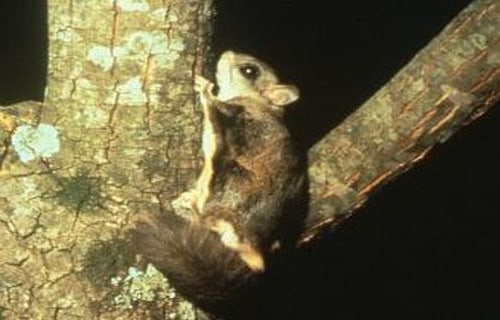
Northern Flying Squirrel Physical Description
The remarkable Northern Flying Squirrel easily impresses those fortunate to encounter one. It does so, however, for reasons other than sheer size. Although it’s certainly a lovely animal, it’s not just its appearance that distinguishes it. That’s due to other characteristics.
Unlike many animals, yet in keeping with the pattern established by other squirrels, this creature displays no noticeable degree of sexual dimorphism. Distinguishing the genders of specific individuals encountered therefore remains quite difficult for the casual observor.
In terms of physical size, though, it’s somewhat smaller than many of its genetic cousins. Individuals attain an average overall length of 9.8 – 14.6 in (25 – 37 cm). That, however, includes the tail as well. This part of the body often comprises roughly half its length.
The body of the rodent develops as slim and elongated. Most specimens reach an average body weight of only 2.6 – 4.9 oz (75 – 140 gms). Exceptional specimens occur, of course. Even these, though, rarely exceed these measurements by more than a small fraction.
It also displays several adaptations useful for its lifestyle. This includes comparatively large, black eyes. It also has the ability to rotate its hind feet, allowing it to climb down trees head first. Its fleshy membrane, however, remains its most noticeable physical feature.
In coloring, the Northern Flying Squirrel presents a pattern of shades of light brown on the upper body. Yet, it also presents as gray on the flanks of its body. The underside, though, typically manifests a whitish shade. Its tail develops as fluffy, yet somewhat flattened.
- Kingdom: Animalia
- Phylum: Chordata
- Class: Mammalia
- Order: Rodentia
- Family: Sciuridae
- Genus: Glaucomys
- Species: G. sabrinus
Northern Flying Squirrel Distribution, Habitat, and Ecology
The fabulous Northern Flying Squirrel evolved as native to a part of the globe well known for its abundance of wildlife. That’s due to the fact that the amazing rodent lives on the continent of North America. There, though, its population remains somewhat disjointed.
As its name implies, the majority of its numbers appear in the northern part of the continent. More specifically, most of its population lives in Canada. It also appears as far north as the state of Alaska, though. The small wonder of Nature also appears in the United States.
In that country, it’s scattered, though. To the west, it’s seen in California and Colorado. From there, it’s also seen to the northeast in Wisconsin and Michigan. In the east, the animal also lives in regions of Tennessee and North Carolina, in the Appalachian Mountains.
In each of these regions, however, it displays identical habitat preferences. Populations most often appear in areas dominated by conifers. Some do, though, make their homes in regions of deciduous or mixed forests. It also prefers dense concentrations of trees, as well.
The Northern Flying Squirrel evolved as a nocturnal animal. It’s also primarily arboreal in nature. On the ground, it’s relatively clumsy. Among the trees, though, it glides from limb to limb gracefully. Its main predators include hawks, owls, martens, and coyotes, among others.
Its diet remains typical of its kind. As a herbivore, it consumes a wide variety of locally available food. This typically includes such staples as nuts, fungi, acorns, lichens, fruits, buds, and tree sap. It does, however, occasionally supplement this with insects and bird eggs.
Snowshoe Hare
Snowshoe Hare Facts
- Our next choice for inclusion in this gathering of 5 Marvelous Mammals of California is perhaps the unexpected species known as the Snowshoe Hare.
- This beautiful small mammal is most frequently referred to by the appealing common name that we use here. Yet, it also has several other, alternate names. Though less often used, it’s sometimes called either the showshoe rabbit or else the varying hare.
- Among scientific professionals, however, such as researchers, it’s typically referred to by its formal name. Thankfully for us, that’s a relatively simple term, as such things go. That’s because the delightful animal bears the technical name of Lepus americanus.
- It received that technical name due to the work of the respected German naturalist, Johann Christian Polycarp Erxleben. That researcher made the first acknowledgement of it as a separate and distinct species. He further accomplished this in the year 1777.
- Regardless of which term one uses to refer to it, though, it remains an intriguing animal. In addition to its sheer visual appeal, it holds a scientific interest in certain circles. In fact, due to aspects of its ecology, it’s a frequent subject of study of biology students.
- Fortunately, for the moment the population of the Snowshoe Hare still appears to be holding steady, and at sufficient numbers. This further seems to hold true throughout the entirety of its territory. The IUCN, therefore, presently lists it as Least Concern.
- The awesome animal nevertheless does face several potential threats, at least. Habitat degradation, or outright loss, due to human acttivites poses a possible future threat. Its greatest threat, however, most likely comes from the effects of ongoing climate change.
Snowshoe Hare Physical Description
The remarkable Showshoe Hare easily captivate those fortunate enough to encounter it. It does so, however, due more to its pure appearance, than because of physical size. That’s because, like most of its relatives, it remains a comparatively small variety of mammal.
It also displays a small degree of the physiological characteristic of sexual dimorphism. The small leporid further does so in terms of simple size. Once again following the pattern common to its kind, the male of the species averages a slightly maller size than the female.
Overall, however, mature individuals generally reach a total length that measures between 16. 3 – 20.4 in (41.3 – 51.8 cm). The animal’s tail develops as relatively short, though. This small appendage, in fact, only contributes about 1.5 – 2.05 in (3.9 – 5.2 cm) to that length.
The hind feet of the creature also develop as extremely long, relative to body length. In this, it stands out even among its kindred. These average between 4.6 – 5.8 in ( 11.7 -14.7 cm) long. Each of these also evolved as comparatively quite broad, forming the source of the name.
Despite the slight difference it size, individuals of the aptly-named Snowshoe Hare appear virtually identical. This trait also extends to the pattern of coloring. In this, too, it stands out from many mammals, though. That’s true since its colors vary according to the seasons.
During the summer, the basic colors consist of combinations of rusty-red and grayish brown. It also presents a whitish stomach, along with a cinnamon shade on the face and legs. But during the winter, this pattern alters significantly. Then, it becomes almost entirely white.
Kingdom: Animalia
Phylum: Chordata
Class: Mammalia
Order: Lagomorpha
Family: Leporidae
Genus: Lepus
Species: L. americanus
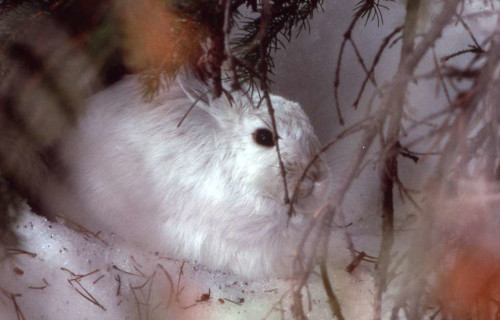
Snowshoe Hare Distribution, Habitat, and Ecology
Fortunately, the gorgeous Snowshoe Hare evolved as endemic to a relatively broad swathe of the globe. That’s due to the fact that it appears natively across a respectable portion of North America. Yet, that range only includes a portion of the northerly sections of the continent.
More precisely, however, the animal only lives in parts of Canada and the United States. The vast majority of its territory lies within the confines of Canada, though. There, the animal lives in most of the country, from Newfoundland in the east, all the way to the western coast.
But, in the United States, that territorial range is broken and widely scattered. Outside the contiguous part of the country, it inhabits most of Alaska. Within the borders, it appears in central California, the Rocky Mountains, southern Utah, and the Appalachian Mountains.
In all regions it appears in, however, it displays decided preferences for its choice of habitat. Although individual exceptions do occur, of course, the majority appear in one of two types of ecosystems. These consist solely of boreal forests or higher regions of montane forests.
In both types of habitat, though, the animal prefers the presence of dense areas of shrub. This serves the dual purpose of protection from predators, and a ready source of food. It consumes green vegetation during the warm months, and bark, twigs, and needles in winter.
Regrettably, the Snowshoe Hare serves as prey for a variety of predators. The Canadian Lynx forms its primary threat, in that regard. Others, however, include bobcats, martens, weasels, wolves, cougars, and black bears. Even a few domestic cats and dogs sometimes prey on it.
Striped Skunk
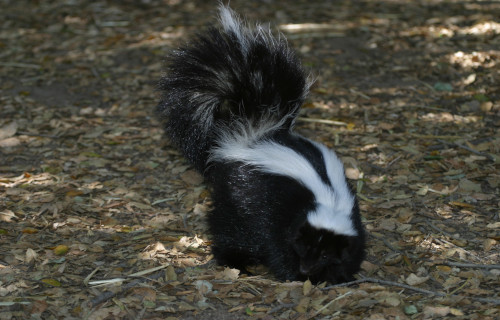
Striped Skunk Facts
- Now appearing in this compendium of 5 Marvelous Mammals of California we give you the oft-maligned wonder known as the Striped Skunk.
- This beautiful small mammal with the unfortunate reputation most frequently goes by the common name due to its appearance. It does have a few other general monikers, though. Those include common skunk, northern skunk, and prairie polecat.
- Within the scientific community, however, it’s typically referred to by its technical title. That, thankfully is a relatively simple name for the layperson to pronounce. That’s true since the animal bears the official moniker of the Mephitis mephitis.
- The creature received that distinctive formal title due to the efforts of the German naturalist, Johann Christian Daniel von Schreber. He accomplished the first acknowledgement of it as a separate and distinct species. That occured in 1776.
- Regardless of which appellation one uses, it remains one of the most easily recognizable animals in its native range. It’s even become immersed in the local culture, appearing as a character in various cartoons. A total of 13 subspecies also exist.
- Fortunately, the remarkable Striped Skunk seems to be maintaining a sizeable and stable population base. That pleasant trend further appears to hold true throughout the entirety of its habitat zone. The IUCN, therefore, now lists it as Least Concern.
- The intriguing creature nevertheless faces some very real potential threats to its continued existence as a species. In this, it’s in the same situation as most species. It’s endangered by the dual perils posed by habitat loss and ongoing climate change.
Striped Skunk Physical Description
The remarkable Striped Skunk presents the viewer with a captivating appearance. It fully deserves appreciation for the beauty Nature gifted it with. It’s not an overly large animal, in terms of pure physical size. Nature, however, blessed it with other attributes.
Like many fauna, the mammal presents a certain degree of the physiological characteristic of sexual dimorphism. In its specific case, this trait manifests itself in terms of sheer physical measurements. Due to that tendency, males attain a larger size than females.
That difference remains minor, though. As a general principle, the males grow to about 10% larger than their female counterparts. This includes both weight and length of body. Exceptional individuals do naturally occur, however, completely regardless of their gender.
Overall, individuals attain an average head-to-tail length equaling between 20.5 – 30.3 in (52 – 77 cm). Body mass also varies accordingly. Specimens therefore typically display weights ranging from 4 – 9.9 lb (1.8 – 4.5 kg). Some do reach as much as 12 lb (5.5 kg), though.
The body of the Striped Skunk is perhaps best described as stout. It’s limbs develop as relatively short, while it has a small, conical head. The thickly-furred tail usually accounts for about half the overall length. The front feet have long claws, but the rear one’s are shorter.
Yet its the color pattern of the animal that catches the eye first. The precise nature of this varies widely between individuals, but a basic pattern remains. That generally consists of a deep black background, with the well-known white stripe extending from nose to tail tip.
- Kingdom: Animalia
- Phylum: Chordata
- Class: Mammalia
- Order: Carnivora
- Family: Mephitidae
- Genus: Mephitis
- Species: M. mephitis
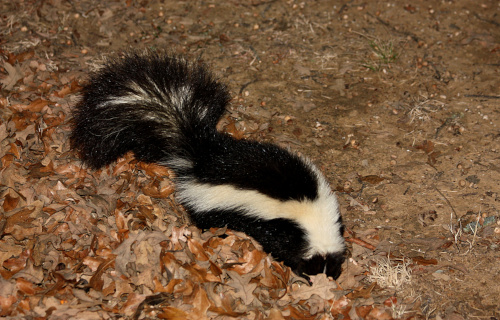
Striped Skunk Distribution, Habitat, and Ecology
The beautiful Striped Skunk evolved as endemic to a comparatively wide expanse of the world. That precise region of the globe doesn’t surprise many people, however. That’s because it developed as endemic to much of what’s now known as North America.
The majority of its natural zone of habitation includes the entirety of the continental United States. To the north, though, it appears in the approximate southern half of the country of Canada. Southerly, the oft-maligned animal lives in a small part of northern Mexico.
Nature blessed this natural marvel with an impressive adaptability in terms of its habitat choices. Due to that flexibility, it appears in a wide range of ecosystems. These include such diverse regions as rocky outcrops, wooded ravines, and moderately brushy corners.
It does, however, show a moderate preference for areas of mixed woodlands. Its adaptability never ceases to amaze, though. As a result of human presence, in some regions, such as the state of Illinois, a few populations actually prefer cultivated areas to uncultivated.
It’s the defensive tactics of the Striped Skunk that gathers the most attention. Two glands near the base of the tail produce an extraordinarily odorous liquid. The animal can spray this at will for a respectable distance. Due to the strength of this, it has few predators.
It’s mainly carnivorous in terms of diet. The animal mostly feeds on insects, such as grasshoppers, crickets, beetles, and caterpillars. Yet, it sometimes eats eggs, voles, mice, as well as fish and small reptiles. Various fruit, such as berries, also form an occasional treat.
Island Fox
Island Fox Facts
- Closing out this article about these 5 Marvelous Mammals of California is the intriguing canine on the list, the Island Fox.
- The simple term serves as the most often used common name for this intriguing member of the Canidae Family. It also goes by a variety of others. These include Coast Fox, Island Gray Fox, Channel Islands Fox, and Insular Gray Fox, among others.
- Among scientists, though, it’s typically referred to by its formal, technical name. Thankfully, that’s a relatively simple term, as such things go. That’s because this marvel of Nature and evolution holds the official moniker of the Urocyon littoralis.
- It received this name due to the efforts of the American researcher, Spencer Fullerton Baird. The respected naturalist made the first acknowledgement of the mammal as a separate and distinct species. He accomplished this noteworthy deed in 1857.
- It also holds a respectable position in the annals of science. This holds true due to the fact that a total of six known subspecies of the species also exist. Each of these subspecies additionally appears only in its own solitary, highly isolated habitat range.
- Four of those profit from federal protection. The Island Fox itself, however, does not. Presently, its population appears to be dwindling. That’s due to a combination of factors, both natural and artificial. The IUCN, therefore, lists it as Near Threatened.
- Most of the dangers it faces arise from human activities. These incluse such problems as introduced species, such as feral pigs. Others include diseases and parasites not native to its habitat. Its greatest threat, though, likely consists of climate change.
Island Fox Physical Description
The Island Fox easily draws the attention of those fortunate enough to encounter it. It’s worth noting, however, that it does so for reasons other than sheer size. That’s due to the fact that this fox qualifies as the smallest of all related species in its part of the world.
In terms of head-and-body length, mature adults average just 19.0 – 19.5 in (48 – 50 cm). The tail, though, varies significantly between individuals. This part of its body averages between 4.5 – 11. 5 in (11 – 29 cm). The reasons for such dramatic variations remains undetermined.
Its shoulder height leaves it small in stature. This varies, but averages 4.5 – 6 in (12 – 15 cm). It also displays the physiological characteristic of sexual dimorphism. In this case, the male attains a larger size than the female. Weights range from 2.2 – 6.2 lbs (1 – 2.8 kg).
It also strongly resembles its mainland cousin, the Gray Fox, in appearance. The greatest visual distinction between the two remains the length of the tail. The main source of that difference springs from the fact that the Island Fox has fewer vertebrae in that appendage.
Its pattern of coloring mainly differs in the degree of shading. That’s due to the fact that, generally speaking, this animal manifests a coat that’s slightly darker and duller than that close relative. The tail further distinguishes the two mammals in yet another manner.
This part of the body displays a black running most of its length. Its close relative lacks this distinctive marking. Otherwise, it manifests gray fur on its head, and a somewhat bright red on its sides. It additionally shows whitish fur on its throat, lower face, and stomach.
- Kingdom: Animalia
- Phylum: Chordata
- Class: Mammalia
- Order: Carnivora
- Family: Canidae
- Genus: Urocyon
- Species: U. littoralis
Island Fox Distribution, Habitat, and Ecology
The amazing Island Fox evolved as native to an overall region of the globe already renowned for its abundance of fabulous flora and fauna. That’s true since it developed as endemic to North America. Sadly, though, it only appeas in an extremely limited portion of it.
This marvel makes its home in a specific portion of the United States. That region’s further part of the state of California. To be specific, it lives on six of the eight islands comprising the Channel Islands of California. Evidence also indicates it never lived anywhere else.
In fact, each of the six subspecies appears on one island apiece. Both they, and the parent species, though, make the most of their situation. That’s because all of them live in every biomes present. These consist of temperate grassland, chaparral, and temperate forests.
Within these various regions, though, the animal displays a strong preference for one type of habitat. That’s partially formed by the presence of a complex layer of vegetation, such as grasses. Yet it also favors the presence of copious woody, perennial fruiting shrubs.
The Island Fox usually forms monogamous breeding pairs. It lives in dens, with the female giving birth to a litter of 1 -5 pups. These she bears in spring, with the young emerging in early summer. All live a principally nocturnal existence, with peaks at dusk and dawn.
Like its relatives, it evolved as a carnivore. Due to its size, however, it generally hunts smaller prey. This typically includes such creatures as lizards, crabs, birds, and small mammals, such as deer mice. It also occasionally supplements this diet with eggs, insects, and fruit.

5 Marvelous Mammals of California
We hope that each of you enjoyed reading, and hopefully learning from, this article we’ve written about these 5 Marvelous Mammals of California. It’s also our hope that doing so has left you with either a new or renewed appreciation for such wonders of Nature.
Unfortunately, however, many of their kindred around the world now find themselves facing strong threats to their continued existence as a species. Many of those dangers, in fact, stem from the actions of mankind. We must do all we can to protect and preserve them all.
Check out our other articles on 3 Surprising South American Moths, Spectacular Dolphins Throughout Our World, 5 Terrific United States Trees, Earth’s Geothermal Marvels
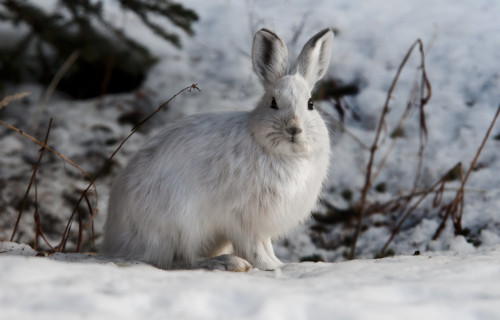


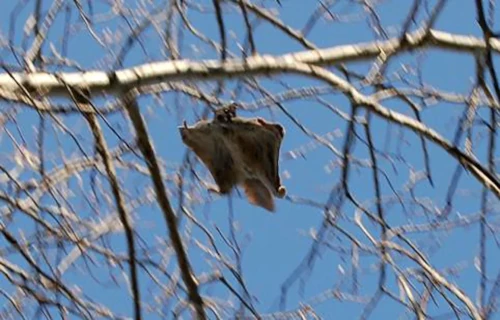
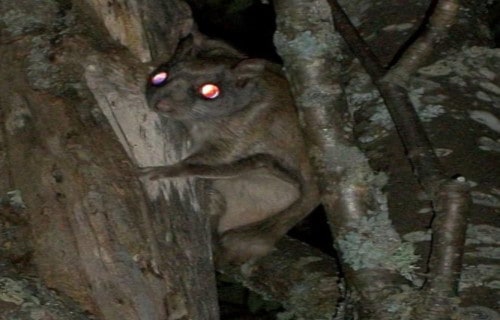
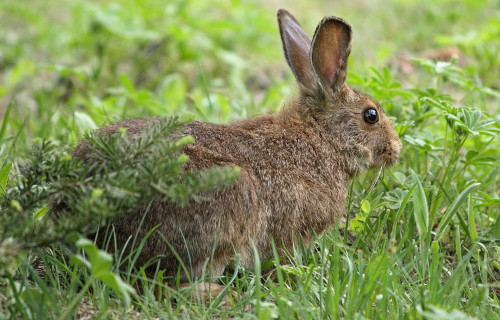
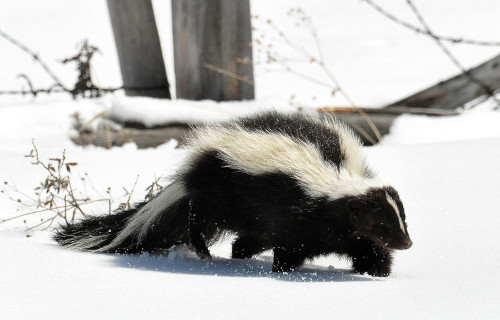
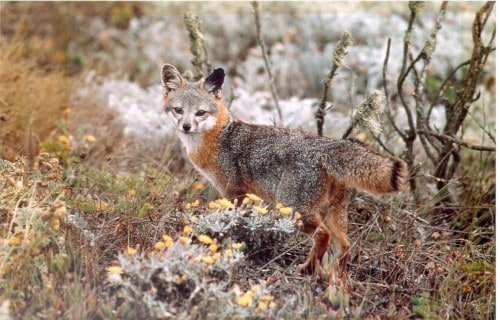
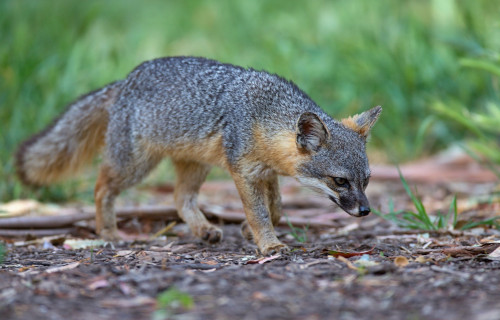
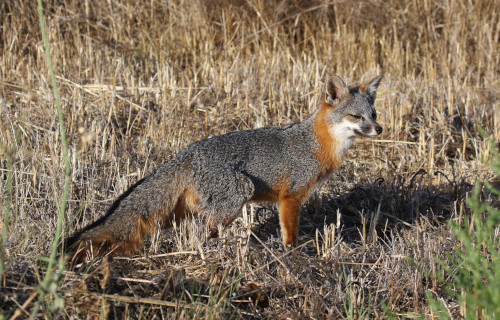









Leave a Reply